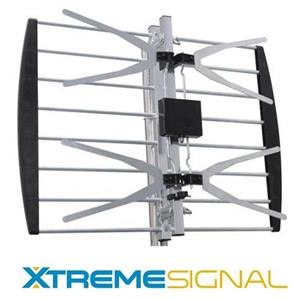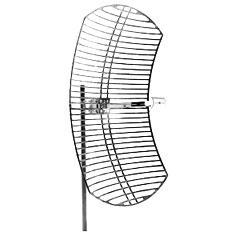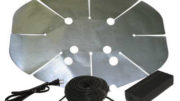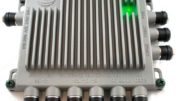The reflector is what makes a lot of reception possible.
You see them on satellite dishes and TV antennas. They’re ether a solid bowl-looking item or a series of bars. They’re reflectors, and they’re an important part of any antenna, whether it’s for satellite, TV, or anything else.
History of the reflector
Reflectors for antennas were first demonstrated in the late 1800s by the scientist Heinrich Hertz, who showed that it was possible to focus radio waves on a specific point. The theory is that you collect a lot of radio waves on a very large surface and bounce them back to a very small point. That way they become very concentrated and you get a much stronger signal than you would have otherwise.
The theory works. By taking a 39″ surface and focusing all the signal onto a tiny area the size of a postage stamp, it’s possible to pull in satellite signals from over 20,000 miles away and get satellite television. Larger dishes can pull in ridiculously weak signals.
It’s not just satellite TV either. The theory of reflectors works well on antennas too. Take a look at this one:

The actual antennas are the little X-shaped things in front. Those bars are a reflector that sends some of the signal to the back of the antennas. This makes them twice as effective and it really works.
Why are some reflectors solid and some let air through?
It depends on what kind of wave they are designed to reflect. Believe it or not, radio waves designed for over-the-air TV are so big that a reflector with a 4″ gap in between each bar will still make them bounce back. On the other hand, satellite dish transmissions are on much smaller waves and so you need an almost solid dish to reflect them.
Almost any surface can be a reflector, but if you want real precision you want a very smooth surface so you don’t scatter the signal. Of course, the surface itself is less important with much larger waves, which is why TV antennas have reflectors with a lot of air in them. You also want a material that doesn’t by its nature absorb radio waves. The color doesn’t matter much, because color is just a measure of how much something absorbs light — the way it absorbs radio waves can be completely different.
It’s true that the bigger the reflector, the more signal gets to the actual antenna, but that doesn’t automatically mean you should buy the biggest dish you can find. There’s a lot more too it than that. The satellite pickups (referred to as LNBs) are designed to receive the amount of signal coming from those 39″ reflectors and putting them on a bigger reflector could mean that they actually get less signal, unless you’re good enough to do all the math to try to figure out exactly where in 3D space they need to be mounted. It is theoretically possible to build a massive dish to get DIRECTV or DISH signals but it’s a lot of custom work and not something you’re likely to be able to do easily.
Get the satellite and antenna products you need
When you’re searching for satellite and over-the-air antenna products, you’ll find the best selection at SolidSignal.com! Check out thousands of high-quality parts at the best prices, all with technical support included!





